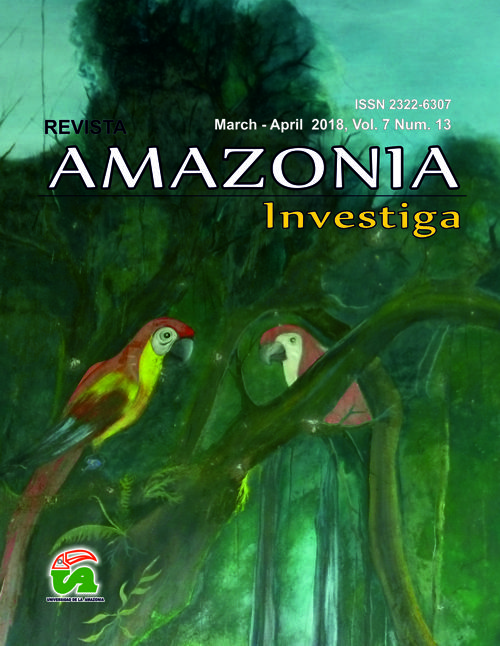Desarrollo de una ventaja competitiva para la industria de los clusters en la base de m. porter de la competitividad nacional "Rhombus"
Publicado 2018-04-30
Palabras clave
- luster industrial, competitividad nacional, ventajas competitivas, política de clusters
Cómo citar
Resumen
Una de las tareas más importantes de la etapa actual de desarrollo es el logro de la competitividad en todos los niveles, la preservación del potencial de recursos previamente acumulado y el aumento integral
del capital de producción en las principales industrias. La práctica mundial demostró que el desarrollo de clusters industriales es una de las formas más efectivas de mejorar la competitividad nacional. Al mismo tiempo, el desarrollo de los procesos de agrupamiento requiere inversiones significativas tanto del estado como de la creación de una determinada política de clúster y de los iniciadores del clúster.
A este respecto, se plantea la cuestión de las medidas de ayuda más eficaces en cada etapa del ciclo de vida de un clúster industrial. El propósito de este artículo es desarrollar la metodología que nos permita formular medidas de apoyo para un desarrollo efectivo de clusters industriales a partir de una evaluación cuantitativa de sus ventajas competitivas. La base teórica del estudio es el modelo de las ventajas competitivas nacionales de M. Porter "rombo", cuyo análisis crítico permitió a los autores proponer la división de los factores de producción en recursos básicos e infraestructura, lo que es especialmente importante para el entorno empresarial ruso. Esta transformación sirvió de base para la metodología desarrollada, que incluye un indicador integral del desarrollo de factores de agrupamiento. El análisis de cada uno de sus componentes en la escala desarrollada permite revelar el grado de implementación de la iniciativa del clúster, así como determinar las medidas de apoyo más efectivas basadas en el estado de las ventajas competitivas del clúster. La determinación de las ventajas competitivas de los conglomerados se lleva a cabo mediante el método de conducta de los grupos focales entre los expertos, y su evaluación cuantitativa se lleva a cabo utilizando el método del cuestionario, que proporciona la evaluación de la implementación y la importancia. La metodología desarrollada puede utilizarse para desarrollar programas normativos y estratégicos para la formación y el funcionamiento de clusters industriales, cuyo desarrollo corresponde a la implementación de procesos de sustitución de importaciones y la transición de Rusia a un tipo de desarrollo innovador.
Descargas
Citas
Belanovsky S.A. (1996). The method of focus groups / S.A. Belanovsky. - M.: Master, 272 p.
Dorzhieva E.V. (2012). The formation and the development of competitive agro-industrial clusters at the mesolevel of the economy: monograph / E. A. Belanovsky. - St. Petersburg: Publishing house of St. Petersburg University of Management and Economics, 168 p.: ill.
Privorotskaya S.G. (2014). The conditions and the process of national economy international competitiveness development: the author's abstract. from the dis. of economic sciences cand.: 08.00.14 / S. G. Privorotskaya. - M., 25 p.
Rakhmanova M.S. (2009a). Innovative strategic analysis of the university as a stakeholdercompany / M.S. Rakhmanova, K.S. Solodukhin //Economic sciences, 1 (50). - pp. 236-242.
Rakhmanova M.S. (2009b). Innovative technology of the organization strategic analysis on the basis of stakeholder theory / M.S.
Rakhmanova, K.S. Solodukhin // Scientific and Technical Statements of SPbSPU. V. 1: Economic sciences, 2. - pp. 102-111.
Semak E.A. (2010). Theoretical problems of the country competitiveness in modern science [Electronic resource] / ?.?. Semak, A.A. Kovalchuk. - Access mode: http://elib.bsu.by/bitstream/123456789/30391/1 /semak_kovalchuk_Trudy.pdf
Shvandar K.V. (2011). Modern trends in the formation of national economy international competitiveness: the author's abstract from the dis. of Econ. Sciences Doctor: 08.00.14 / K.V. Shvandar. - M., 48 p.
Shashlo N.V., Kuzubov A.A., Vildeman A.I. (2017). Competitive adaptability as the parameter of investment estimation in development of the enterprises. Azimuth of Scientific Research: Economics and Administration, ?. 6. ? 1 (18). ?. 209-212.
Catwright W. (1992). Canada at the Crossroads Dialogue // Business Quarterly. Vol. 57, # 2. — pp. 10—12.
Cho D.S., Moon H.C. (2012). From Adam Smith to Michael Porter. Evolution of competitiveness theory / D.S. Cho, H.C. Moon. [Electronic resource]. – Access: http://ebooks.worldscinet.com/ISBN/9789812385222/toc.shtml.
Dunning J. H. (1993). Internationalizing Porter’s Diamond // Management International Review, Vol. 33, # 2. — pp. 7—15.
Bell, A., Freirech, J., Heymann, T., Tamutunu, E.M., Zaharudin, A. (2006). Israeli Biotechnology Cluster [Electronic resource]. – Access: http://www.isc.hbs.edu/pdf/Student_Projects/Isr ael_Biotechnology.pdf.
Jyotiprasad, M. (1992). Statistical Methods: An Introductory Text // New Age International.
Krugman, P. (1996). Competitiveness: A Dangerous Obsession, Chapter 1, and Myths and Realities of US Competitiveness // Cambridge, Mass: MIT Press. – 1996. – pp. 3–104.
Letica, B. (2006). The Macedonian Wine Cluster / B. Letica, D. Doncev, E. Esen [Electronic resource]. – Access:
http://www.isc.hbs.edu/pdf/Macedonian_Wine_Cluster, pdf.
Marshall, A. (2013). Principles of Economics / A. Marshall. – [London] : Palgrave Macmillan, 2013.– 715 p.
Martin R., Sunley P. (2003). Deconstructing Clusters: Chaotic Concept or Policy Panacea? //Journal of Economic Geography, Vol. 3. — pp. 5—35.
Moon H.C., Rugman A.M., Verbeke A. (1998). A generalized double diamond approach to the global competitiveness of Korea and Singapore //International business review. 7.
Mindlin Yu.B. (2017). Formation and development of cluster management in the regional economy of the Russian Federation /Yu.B. Mindlin, I.L. Litvinenko, Zh.S.
Zhangorazova, R.A. Shichiyakh, N.Yu. Veselova, G.V. Petruk // International Journal of Applied Business and Economic Research, ?. 15. ? 13. pp. 201-211.
Narula, R. (1993). Technology, International Business and Porter’s “Diamond”: Synthesizing a dynamic competitive development model //Management International Review, Vol. 33, # 2. — pp. 85—107.
Porter, M.E. (1990). The Competitive Advantage of Nations /M. E. Porter. – New York : The Free Press, 580 p.
Porter, M. E. (2009). Textiles & Apparel Cluster in South Africa [Electronic resource] / M. E. Porter, C. Ketels. – Access: http://www.isc.hbs.edu/pdf/Student_Projects/SouthAfrica_Textiles.pdf.
Rugman, A.M. (1992). Porter Takes the Wrong Turn // Business quarterly, Vol. 56. – #3.
Van den Bosch, F., Van Proijen A. (1992). The Competitive advantage of European nations: The impact of national culture — a missing element in Porter’s analysis? // European Management Journal, Vol. 10. — pp. 173—177.
Wignaraha, G. (2003). Competitiveness Strategy in Developing Countries: a Manual for Policy Analysis // ed. by G. Wignaraha. — London: Routledge, 320 p.










